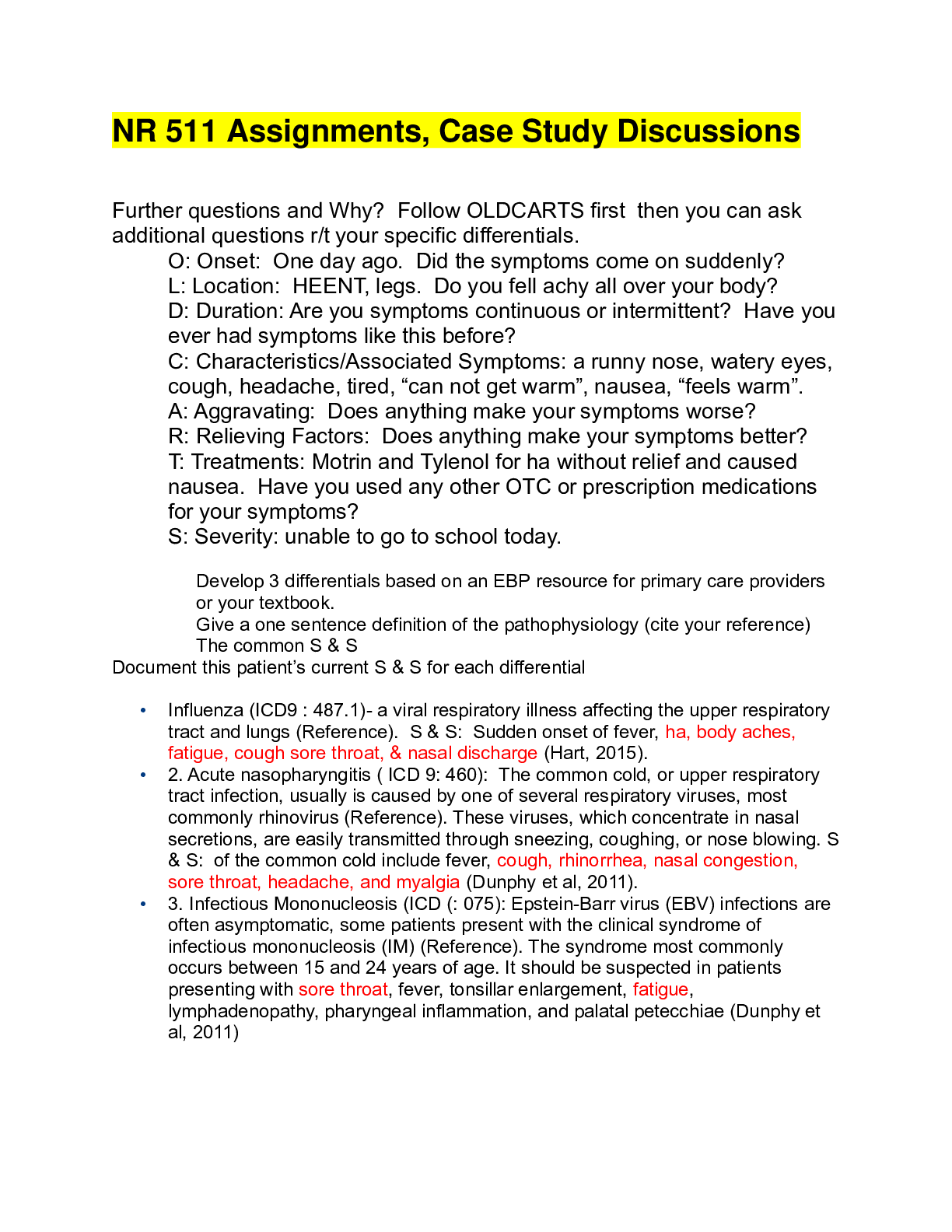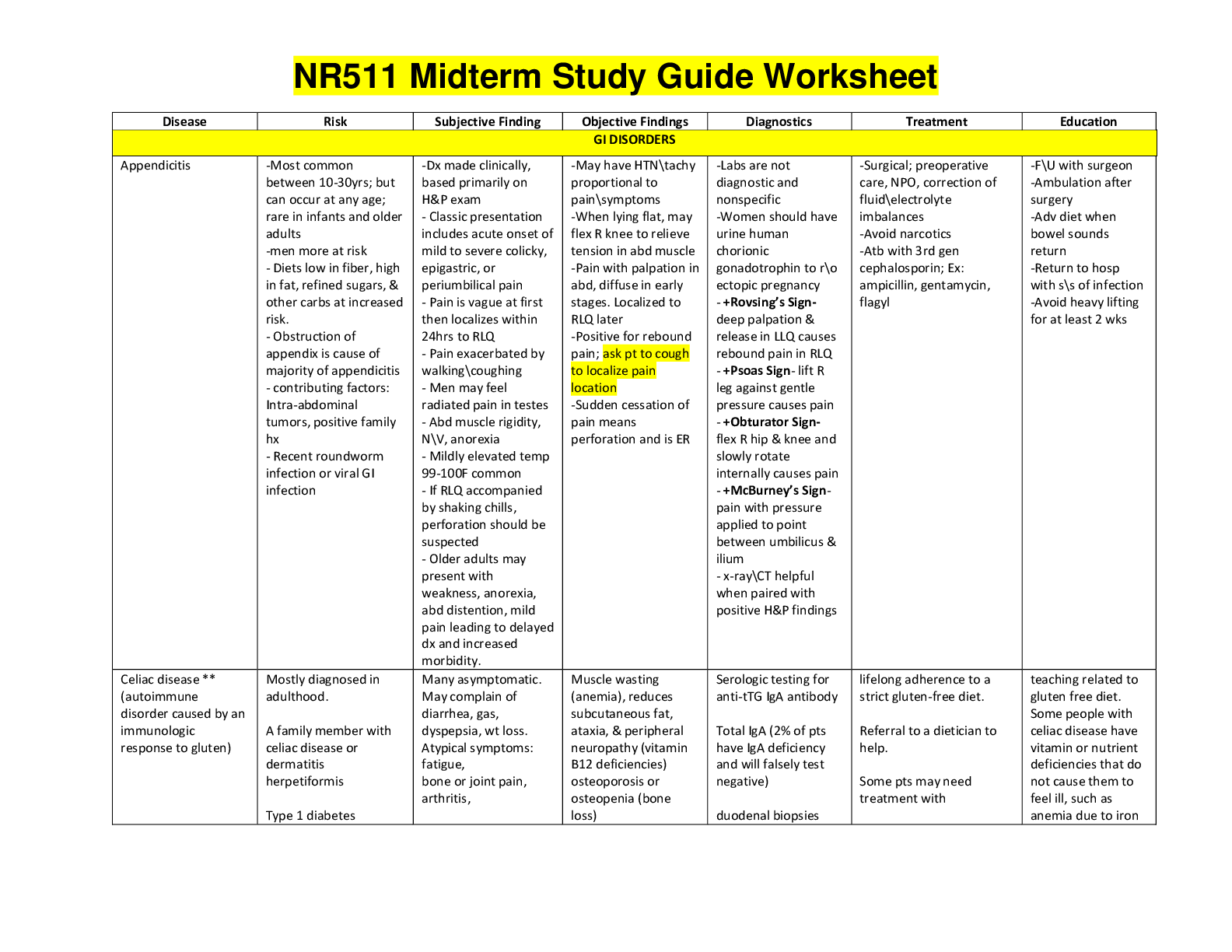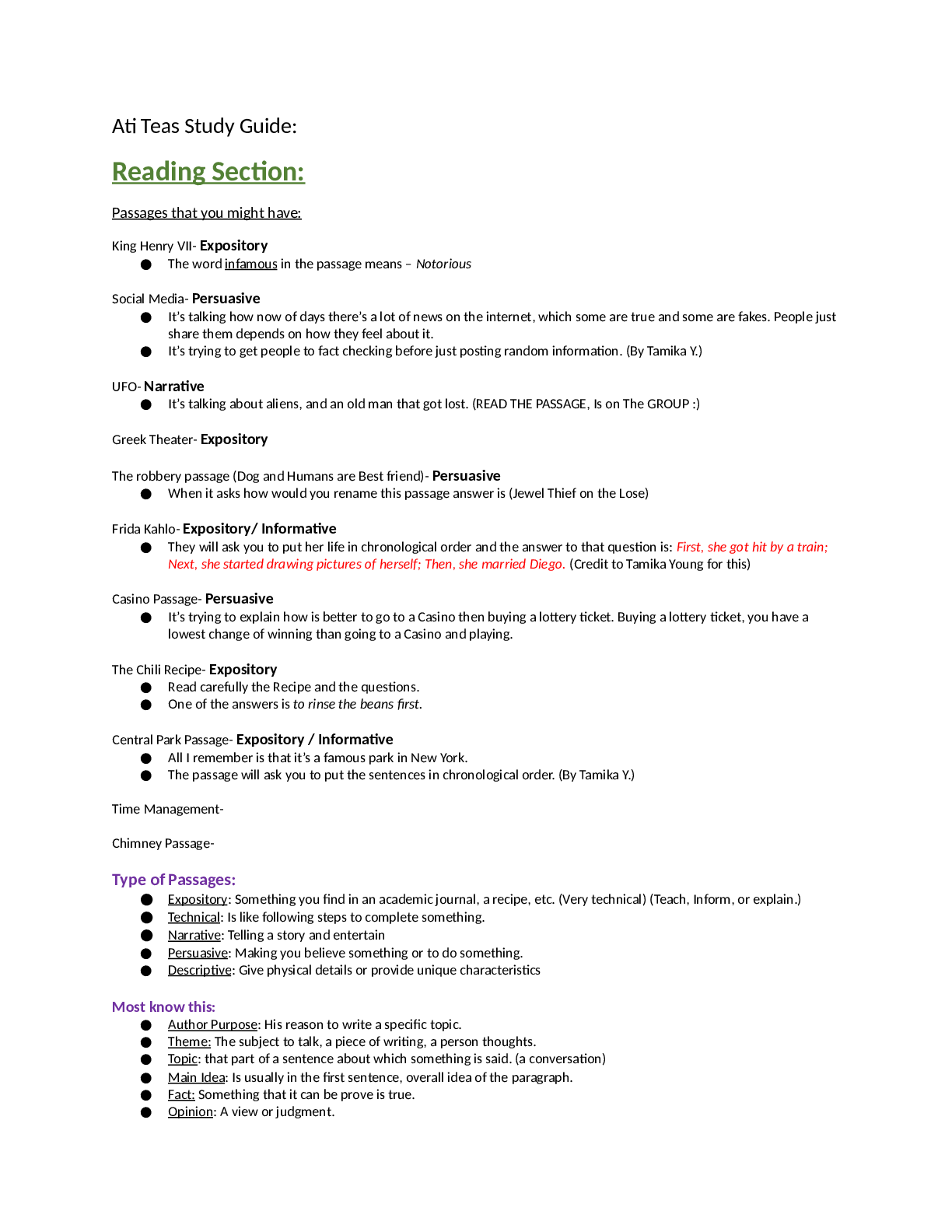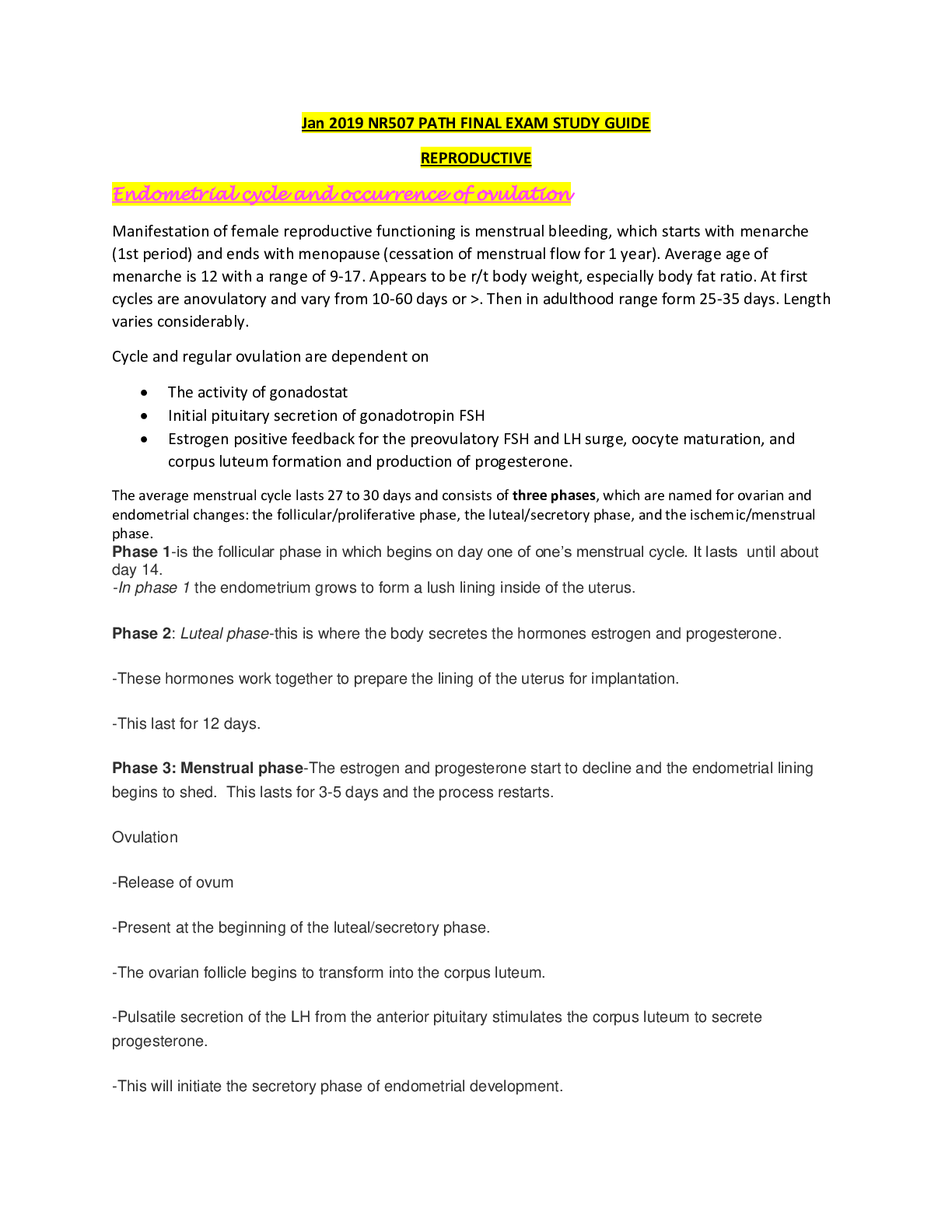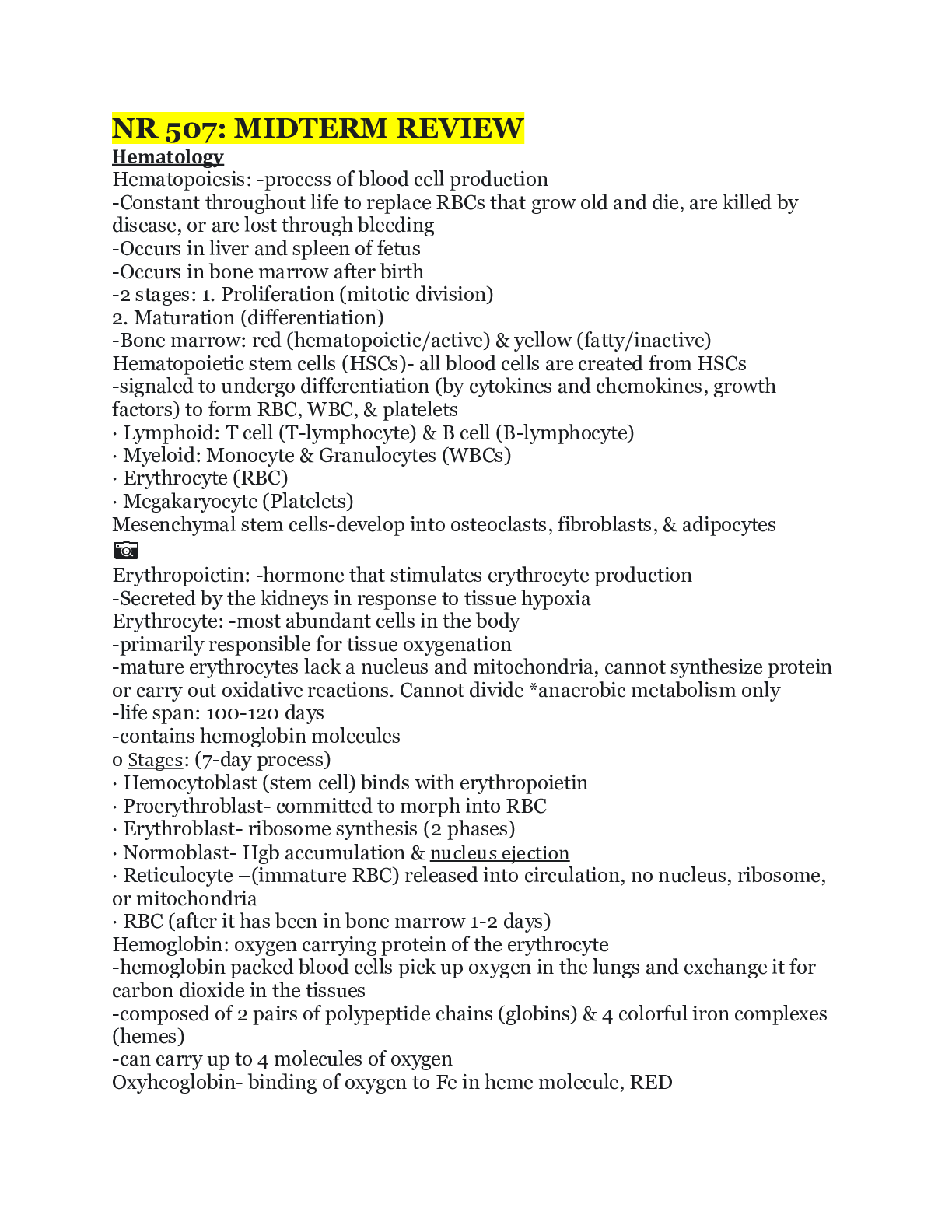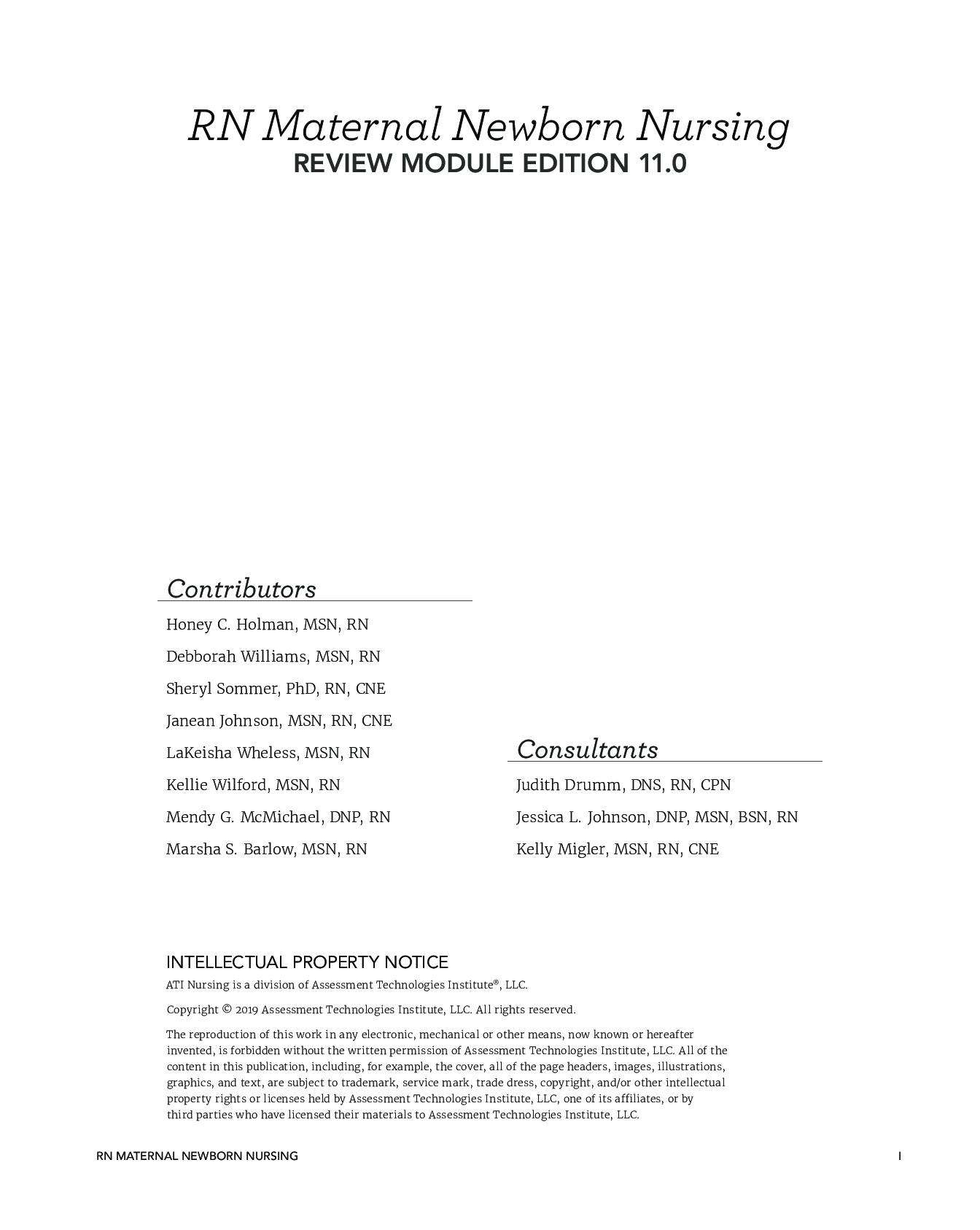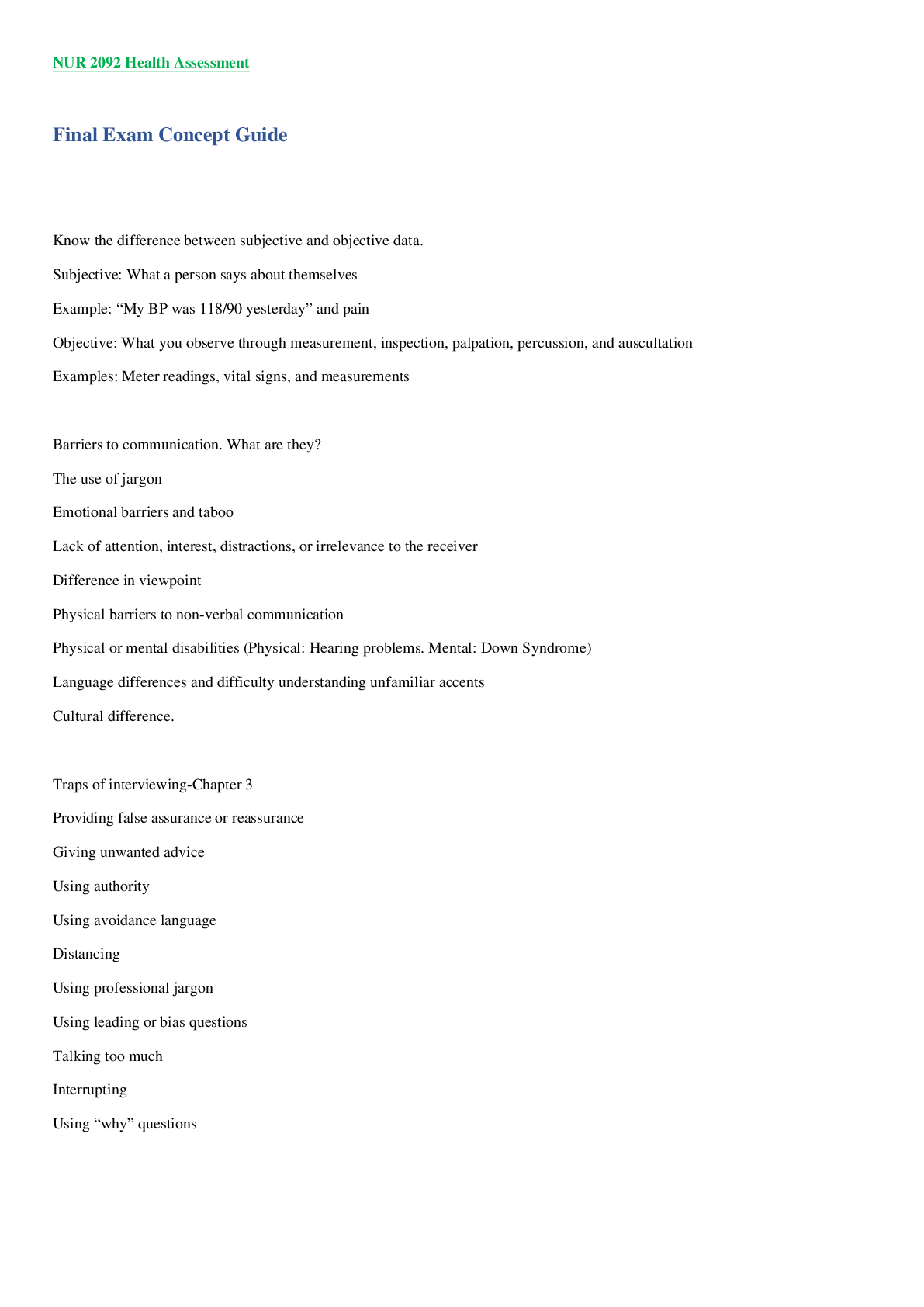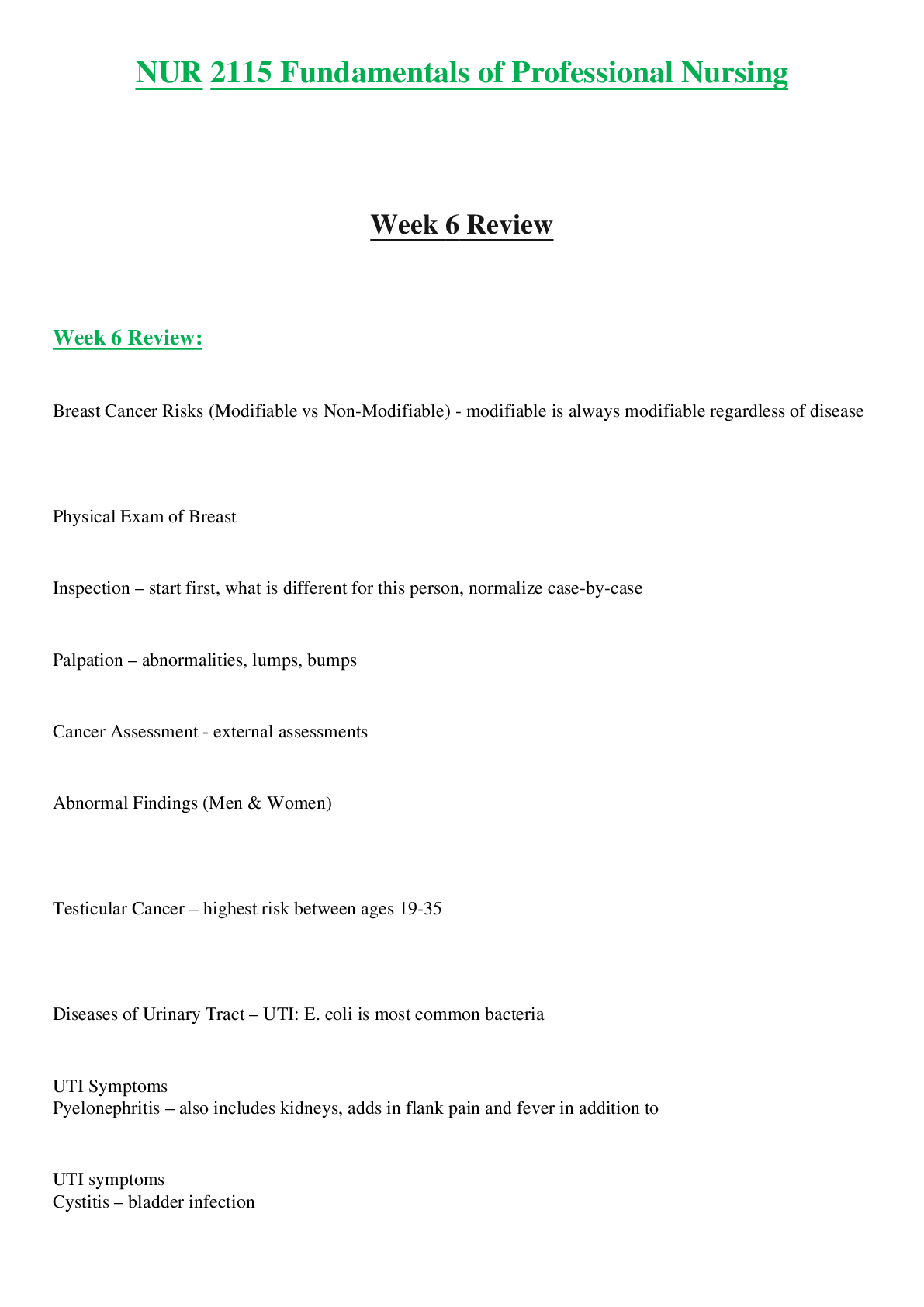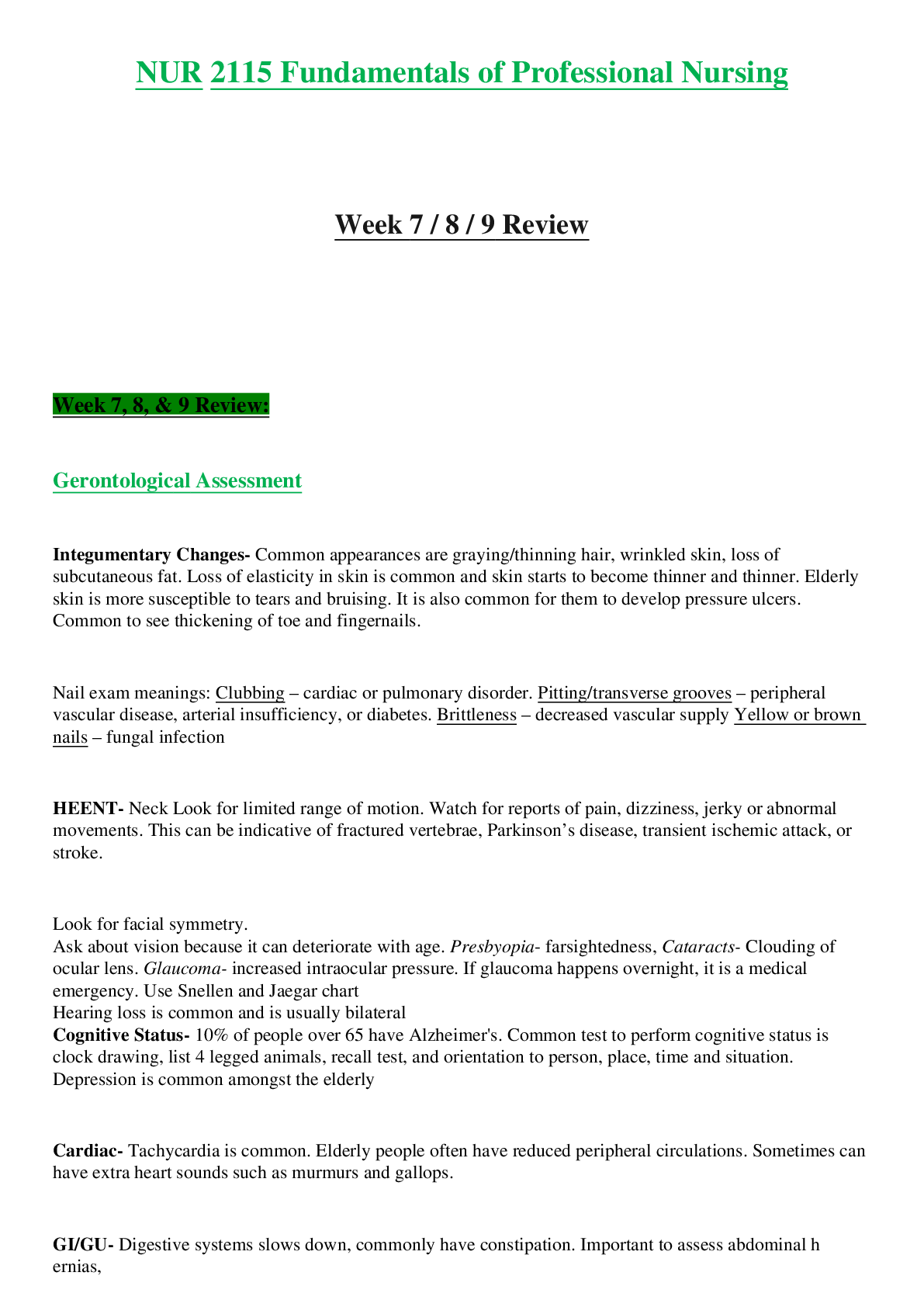Statistics > STUDY GUIDE > University of Phoenix > SEJPME II Module Module 9 Post test (2019) (All)
University of Phoenix > SEJPME II Module Module 9 Post test (2019)
Document Content and Description Below
SEJPME II Module Module 9 Post test 1) Command at all levels is the art of motivating and directing people and organizations into action to accomplish missions. The ____ function supports an efficien ... t decision-making process, enabled by timely intelligence, surveillance, and reconnaissance. 2) _____ is an authority over assigned or attached forces or commands, or military capability or forces made available for tasking. 3) _____ focus on the enemy or adversary and the operational environment and drive intelligence collection and production requirements. 4) The _____ stage of the commander's decision cycle allows the commander and staff to identify where the current situation deviates from the situation in the plan. 5) The _____ stage of the commander's decision cycle is where the commander and staff make adjustments to the current plan or develop new plans with the purpose of successful completion of the broader mission. 6) Component and supporting commands' organizations and capabilities must be integrated into a joint organization that enables effective and efficient joint C2. The joint force commander should be guided in this effort by _____. (Select all that apply.) 7) _____ allows for the mutual use of information services or capabilities. This ability may cross functional or organizational boundaries. 8) The joint communications system includes synchronization of warfighting functions, such as locating and identifying friendly forces, and supports the conduct of operations. This contributes to _____. 9) A networked force can increase combat power, achieving greater speed of command decisions and increasing the _____ of the force. (Select all that apply.) [objective180] 10) The _____ serves as the JFC's principal organization to draft the commander's information dissemination policy and coordinates information management functions within the joint force. 11) The _____ serves as the JFC's principal organization to draft the commander's information dissemination policy and coordinates information management functions within the joint force. 12) _____ is when equipment and systems can be operated and maintained by personnel trained on any of the systems without additional specialized training. [Show More]
Last updated: 3 years ago
Preview 1 out of 2 pages

Buy this document to get the full access instantly
Instant Download Access after purchase
Buy NowInstant download
We Accept:

Reviews( 0 )
$3.00
Can't find what you want? Try our AI powered Search
Document information
Connected school, study & course
About the document
Uploaded On
Dec 02, 2019
Number of pages
2
Written in
All
Additional information
This document has been written for:
Uploaded
Dec 02, 2019
Downloads
0
Views
173

